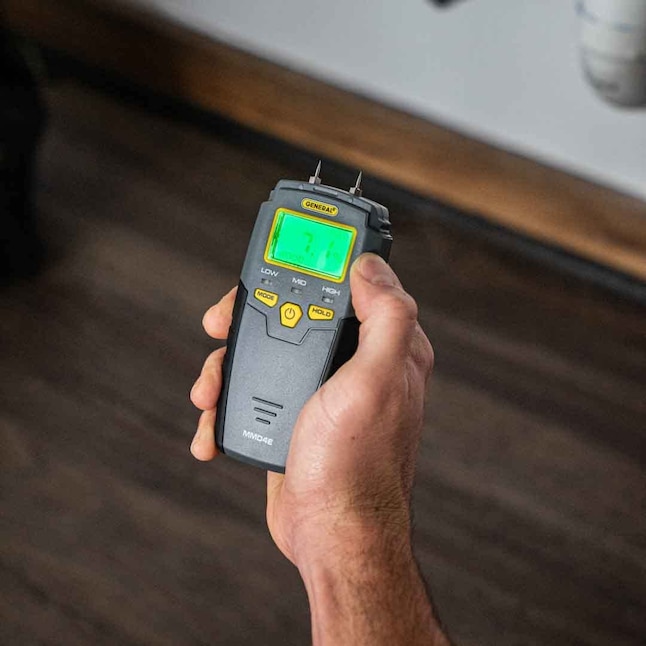Comprehending the Various Types of Moisture Meters and Their Applications
Wiki Article
Delve Into the Globe of Moisture Meters: Every Little Thing You Need to Know
In the realm of dampness meters lies a globe of accuracy and functionality that usually goes unnoticed. Recognizing how moisture meters run, the various types offered, and their varied uses can drop light on their relevance in guaranteeing top quality and efficiency.Exactly How Moisture Meters Work
Moisture meters operate by determining the electric conductivity or capacitance of materials to figure out the moisture material existing. These meters are important devices throughout various markets, consisting of woodworking, building, and farming. By using various approaches such as pin-type or pinless technology, wetness meters supply exact readings that assist specialists make educated decisions.
Pin-type moisture meters work by inserting the sharp pins into the material being checked. The electric conductivity in between the pins is then measured, with greater wetness degrees bring about increased conductivity. Moisture Meter. On the other hand, pinless wetness meters utilize electro-magnetic signals to check a bigger location without triggering any kind of damages to the product's surface area. These meters are excellent for quickly evaluating wetness levels in big areas or finished products.
No matter of the approach utilized, wetness meters play an important role in stopping problems such as mold development, architectural damage, or item flaws brought on by excess moisture. Recognizing exactly how these meters work is crucial for making sure the high quality and honesty of products in various applications.
Kinds of Moisture Meters
Provided the critical duty moisture meters play in numerous markets, it is vital to recognize the different kinds available to specialists for accurately analyzing wetness degrees - Moisture Meter. There are mainly 2 main kinds of moisture meters: pinless and pin-type moisture meters

On the other hand, pinless moisture meters make use of electromagnetic sensor plates to check a bigger area of the material without creating any type of damages. This type appropriates for rapidly scanning huge areas and is generally used for floor covering, wall surfaces, and ceilings. Pinless meters are practical for taking analyses on finished surfaces without leaving any kind of visible marks.
Both types of dampness meters have their advantages and are selected based upon the particular demands of the work at hand. Comprehending the distinctions between these kinds is crucial for experts to make exact moisture evaluations.
Applications Throughout Industries
Building specialists depend on dampness meters to examine the moisture levels in structure materials like concrete, drywall, and wood, which is important for maintaining architectural honesty and avoiding issues like rot or mold. The floor covering industry uses dampness meters to determine the dampness content in subfloors prior to mounting various floor treatments, avoiding pricey damages due to excess wetness. In the food sector, moisture meters are utilized to check and control moisture levels in items such as grains, nuts, and dried out fruits to maintain freshness and top quality.Tips for Using Wetness Meters
Make use of the moisture meter's calibration settings to make sure exact readings when determining the dampness web content in various products. Calibration is critical for the proper functioning of a wetness meter. Prior to each usage, it is advisable to inspect and change the calibration setups according to the particular product being tested. Additionally, ensure the meter is set to the appropriate wetness array for the product you are gauging to obtain the most exact outcomes.When utilizing a pin-type wetness meter, place the pins to the proper deepness suggested for the material being tested. This guarantees that the moisture analyses are extracted from the proper deepness within the product, supplying a more accurate depiction of its wetness material. For pinless moisture meters, bear in mind to keep appropriate contact with the product's surface to obtain trusted check it out analyses.
Consistently inspect and change the batteries in your moisture meter to avoid imprecise readings because of low power. Shop the meter in a completely dry and secure area when not being used to lengthen its life expectancy and maintain its precision. By adhering to these suggestions, you can maximize the performance of your dampness meter and obtain accurate dampness content measurements throughout various materials.
Maintenance and Calibration
To make sure the precision of moisture Click This Link material dimensions, normal upkeep and calibration of the moisture meter are necessary action in its proper functioning. Maintenance entails maintaining the moisture meter cost-free and clean from debris that might impact its analyses. It is very important to follow the producer's guidelines for cleansing to avoid damages to the device. Additionally, regular calibration is required to confirm the precision of the analyses. Calibration adjusts the moisture meter to ensure that it supplies constant and trusted results.Calibration must be carried out periodically, specifically if the wetness meter is used regularly or in vital applications where accurate dimensions are needed. By adjusting the wetness and keeping meter frequently, users can trust the precision of the wetness web content measurements obtained.
Final Thought

To conclude, dampness meters play an essential duty in various markets by properly measuring the wetness content of materials. Comprehending just how these devices work, the different kinds readily available, and proper maintenance and calibration are vital for getting reliable results. Whether in building, farming, or production, making use of moisture meters assists guarantee high quality control and performance in processes.

In final thought, moisture meters play an essential role in numerous sectors by precisely determining the moisture content of products.
Report this wiki page